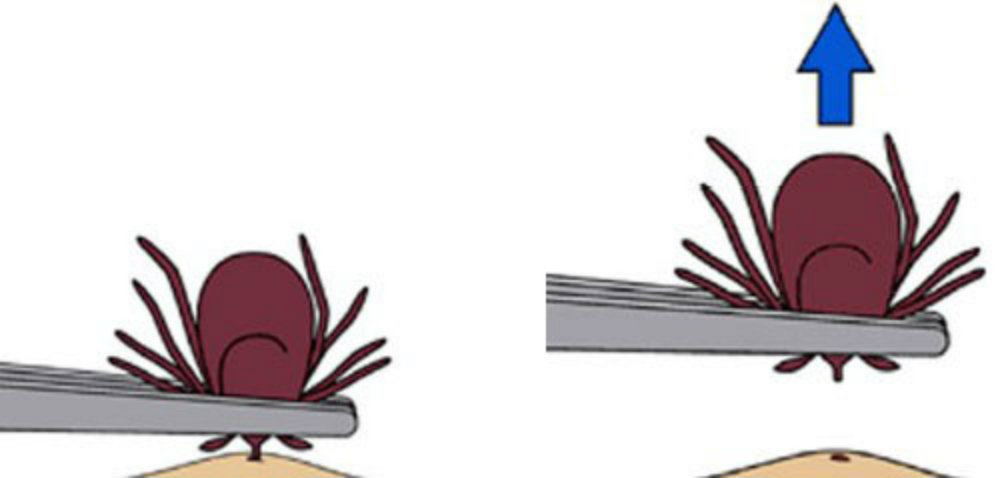Oh no! You have a tick on you and it's bitten you. What do you do? Get if off of you as quickly and safely as you can.
Removing a tick promptly and properly is essential to reduce the risk of transmitting any potential pathogens it may be carrying. Here's a step-by-step guide on how to safely remove a tick:
-
Prepare: Put on gloves to protect yourself from potential contact with the tick's bodily fluids, which could carry pathogens. Use fine-tipped tweezers, if possible, for better precision.
-
Locate the tick: Using a magnifying glass and good lighting, locate the tick's attachment site on the skin. Ticks often attach themselves in warm, moist areas such as the groin, armpits, scalp, and behind the ears.
-
Grasp the tick: Using the tweezers, grasp the tick as close to the skin's surface as possible. Be careful not to pinch the skin. Avoid squeezing the tick's body, as this may cause it to regurgitate saliva and increase the risk of transmitting pathogens.
-
Remove the tick: With a steady motion, pull upward slowly and firmly. Do not twist or jerk the tick, as this may cause its mouthparts to break off and remain embedded in the skin. Continue applying gentle pressure until the tick releases its hold and is removed entirely.
-
Dispose of the tick: Place the tick in a sealed container or ziplock bag for identification, if necessary. Avoid crushing the tick with your fingers. Instead, you can submerge it in rubbing alcohol to ensure it is killed.
-
Clean the bite area: Thoroughly clean the bite site and your hands with soap and water, rubbing alcohol, or an antiseptic solution. This helps reduce the risk of infection.
-
Monitor for symptoms: Keep an eye on the bite site for any signs of infection or unusual symptoms in the following days or weeks. If you develop a rash, fever, headache, muscle aches, or other flu-like symptoms, seek medical attention promptly, especially if you live in an area where tick-borne illnesses are prevalent.
It's essential to avoid home remedies such as applying heat, petroleum jelly, nail polish, or alcohol to the tick before removal, as these methods may increase the risk of transmitting pathogens or cause the tick to burrow deeper into the skin.
If you're uncomfortable removing the tick yourself or if the tick has been attached for an extended period, it's best to seek medical assistance. A healthcare professional can safely remove the tick and provide further guidance on monitoring for potential complications.

If you develop a rash, terrible headaches or muscle aches within a few weeks see your doctor. Be sure to tell the physician you were bitten by a tick.
Reference and photo from: https://www.cdc.gov/ticks/removing_a_tick.html

